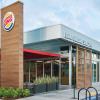Aside from Krispy Kreme and Dunkin’, doughnut brands have mostly failed to gain national notoriety in the U.S., instead remaining niche, regional favorites that stick closely to traditional formats and flavors. But Duck Donuts is looking to change the narrative around doughnuts, rocketing to nearly 100 locations around the country—and now a handful internationally—serving a wide variety of innovative flavors that can be customized by guests.
Founder and CEO Russ DiGilio says he doesn’t see the ceiling on Duck Donuts’ potential, but that the brand is navigating franchise growth in a calculated manner.
“We're still gathering information and analyzing demographics and what's the best fit for our stores,” he says. “But it is scalable. We don’t know where all we're going right now, but we're having fun getting there.”
But as DiGilio says during a recent episode of QSR’s podcast “Fast Forward,” it wasn’t always fun. On the podcast, he shared his tips on how the brand overcame early challenges to become one of the most exciting things going for doughnuts today.
1. Persevere through tough times
DiGilio had worked in the healthcare field for decades before having an epiphany during a trip to North Carolina’s Outer Banks. There were no doughnut shops in the area at the time, he said, and yet the area—a very popular tourist destination—was perfect for a family-friendly boardwalk doughnut shop with a beach vibe.
So DiGilio and his family developed a concept and opened two stores at once—one each in Kitty Hawk and Duck, North Carolina (thus the name). But while the need for a new doughnut shop seemed obvious to DiGilio, it apparently didn’t to consumers.
“The first two years, 2007–2008, were abysmal. We just struggled. Nobody knew who we were,” he says. “We used to celebrate $300 days of sales, which today, in peak season, we're doing $7,000–$8,000 a day. We struggled but we prevailed. The third year that we were operating, we broke even, and that told me that this is going to have legs; it’s starting to catch on.”
2. Get customer trial
Part of the trick in building the Duck Donuts business was capturing customers in a highly transient area. The Outer Banks are lightly populated during the off season, and even in the peak summer months, most tourists turnover every week.
DiGilio says the team promoted the brand by handing out fliers to visitors bureaus and local rental agencies. The key, he says, was getting visitors and locals alike to come into the restaurants to try the product. From there, he was certain they would become regulars.
“It took a couple of years. But people are pretty loyal to the Outer Banks and kept coming back, and then they started looking for us,” he says. “Even today, a lot of our growth is just kind of organic and people just trying our doughnuts.”
These days, DiGilio adds, Duck Donuts is much more sophisticated in how it markets itself, with field marketing managers working with franchisees to promote their businesses.
3. Make it a show
Duck Donuts isn’t like most other doughnut brands where the product is pre-made and racked ahead of orders. Instead, Duck Donuts’ product—a cake-based doughnut—is made to order right in front of the guests. Customers can watch as the dough is formed and fried, sliding down an assembly line to team members who add icings, drizzles, and toppings.
“Anyone can make a doughnut, and we thought we had the right combination for a great doughnut,” DiGilio says. “But we wanted it to be entertaining as well. So we put the glass up and we put in a step stool for kids. They can press their nose against the glass and watch it being made.”
Not only does the made-to-order process limit waste in the restaurants, but it also turns the order into a family friendly experience.
4. Look beyond the doughnut
Duck Donuts is steadfast in its cake-based doughnut product. DiGilio says the brand has no plans to introduce a yeast doughnut, and that customers have not demanded one. (There are plans to test a chocolate cake doughnut, though.)
Where the brand stands out in its menu is the vast array of icings and toppings available to put on top of doughnuts. Guests can either customize their order or select from among a long list of signature creations, many of which change with the season. Winter selections include the chocolate icing with toffee crunch, lemon icing with shredded coconut, and peanut butter icing topped with Oreo cookie pieces and hot fudge drizzle doughnuts.
But DiGilio says he doesn’t want the concept to “go stale” with customers, and so Duck Donuts is constantly looking for ways to shake up the standard doughnut menu. The brand offers breakfast sandwich options that use doughnuts as the carrier, and there are also sundaes with a warm doughnut, ice cream, and the customer’s choice of toppings. The latter helps extend Duck Donuts’ business to later in the day, as DiGilio says most stores are open until 7 or 8 p.m.
“[The sundaes are] a great dessert item, especially when we've added in the ice cream,” he says. “We try to partner with local creameries wherever we can.”
There’s also been a recent emphasis placed on beverages.
“We've moved beyond just having coffees and maybe espresso,” he says. “We've gotten more into the frozen beverages, both caffeinated and non-caffeinated for the kids. Something that's been very popular are our milkshakes.”
5. Follow the franchise demand…
In Duck Donuts’ early years, DiGilio had no plans to franchise the concept. But being located in a tourist destination proved a useful billboard for franchise leads, and the CEO says he was barraged early on with inquiries from regulars who wanted to open a Duck Donuts back in their hometowns.
By the time Duck Donuts had four locations across the Outer Banks, the franchise demand won him over.
“We just did it for fun, honestly, to see how it would go. So there we have four stores open and printing money, and it was just awesome seasonal business,” he says. “But it became so overwhelming with people requesting [franchises], I thought, you know what? If we do not give this a try, we’re going to kick ourselves.”
The first franchises opened in Williamsburg, Virginia Beach, and Richmond, Virginia—all only a few hours from the Outer Banks and home to many people who vacationed there. As the brand grew, though, DiGilio says the team discovered that the Outer Banks recognition only went so far.
“The first challenge that we had was in Raleigh, North Carolina,” he says. “No one had heard of us. People there vacationed in Myrtle Beach, [South Carolina].”
Just like the first units in the Outer Banks, though, business started to pick up over time as locals experienced the Duck Donuts business. And that was the validation DiGilio needed to step on the growth accelerator.
“It just proved to me that we don't have to be in a resort area,” he says. “People don't necessarily have to know who we are, but if we're well placed [and] we’ve got the right partnership with franchisees, this could play anywhere, because people generally love doughnuts.”
6. …but have some standards
While the early franchise demand opened plenty of doors for Duck Donuts, it didn’t always lead to the right franchisees.
“I learned very quickly that enthusiasm does not equal success,” DiGilio says. “We had people coming to us who just loved our brand, and were just so enthusiastic. But it didn't always work out in terms of business.”
He says the company is much more careful in selecting the right franchise partners these days.
“We’re far more stringent with the interview process and making sure they have business plans, they have business sense, they have good people skills,” he says. “There's a lot more to it than just saying, ‘Hey, I think this is going to work in my hometown and I'm really excited.’”
Today, Duck Donuts has 90 units open, with contracts in place for 145 more. The brand has expanded to Chile and will soon open in Puerto Rico, Saudi Arabia, and Dubai.
7. Lean into your icon
Opening its first shop in Duck, North Carolina, didn’t just give Duck Donuts a great name; it also gave it a great icon. A playful cartoon duck is now the official Duck Donuts mascot, and shows up in everything from the logo to store design and online branding.
Then there’s the merchandise. Duck Donuts offers t-shirts, mugs, and other goodies for customers to purchase in the store, with the duck as the star. And the cornerstone of the merchandise platform is a bucket full of rubber ducks dressed up in a wide variety of looks.
“Kids just love those,” DiGilio says, “and we can't keep them on the shelf.”
Beyond the merchandise, the duck has become a calling card for Duck Donuts’ community partnerships and philanthropy through the brand’s “Quack Gives Back” platform.
“That's a way to stay connected to our local communities through sporting programs and churches and schools and raising money for different groups and people in need,” DiGilio says. “It's up to the franchisee, but we have our whole program built around that, so it makes it easy for them to stay connected with their community.”
As a national initiative, Duck Donuts partners with Gabe’s Chemo Duck Program, a nonprofit that provides education and comfort to cancer patients through medical play, therapeutic tools, and stuffed ducks dressed in hospital scrubs with a chemotherapy port. Duck Donuts has raised more than $140,000 through an annual campaign supporting the program.
8. Diversify your customer base
Just like any other foodservice business, Duck Donuts is wrestling with the evolution of the industry toward more off-premises experiences. DiGilio says the company has responded by diversifying the brand to include online ordering, third-party delivery, catering, food trucks, and nontraditional locations. It also just debuted its Rewards app, a mobile point-based loyalty program powered by LevelUp.
The effort to expand the Duck Donuts experience beyond the in-store model, DiGilio says, is an attempt to diversify the customer base.
“We target three groups,” he says. “Families, but primarily moms with kids. Then what we call our office heroes, where we have people bringing doughnuts to office meetings or just to say thank you to their employees. And then we have millennial snackers that, they're not buying volume of donuts, but they love to come in for a couple of doughnuts and coffee.”
For more on Duck Donuts' explosive growth, stream the episode of "Fast Forward" above or click here for the show's full archive.


















